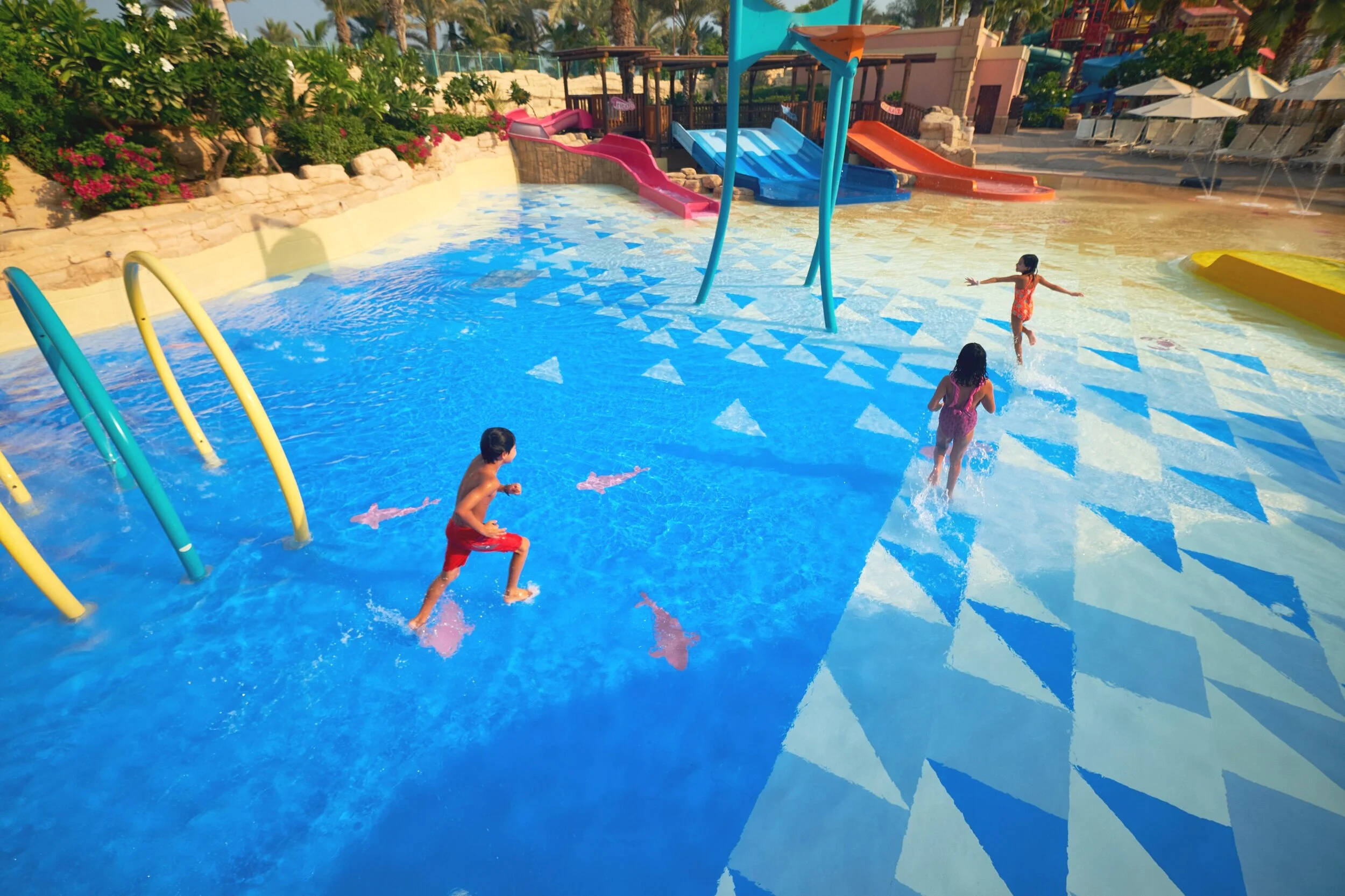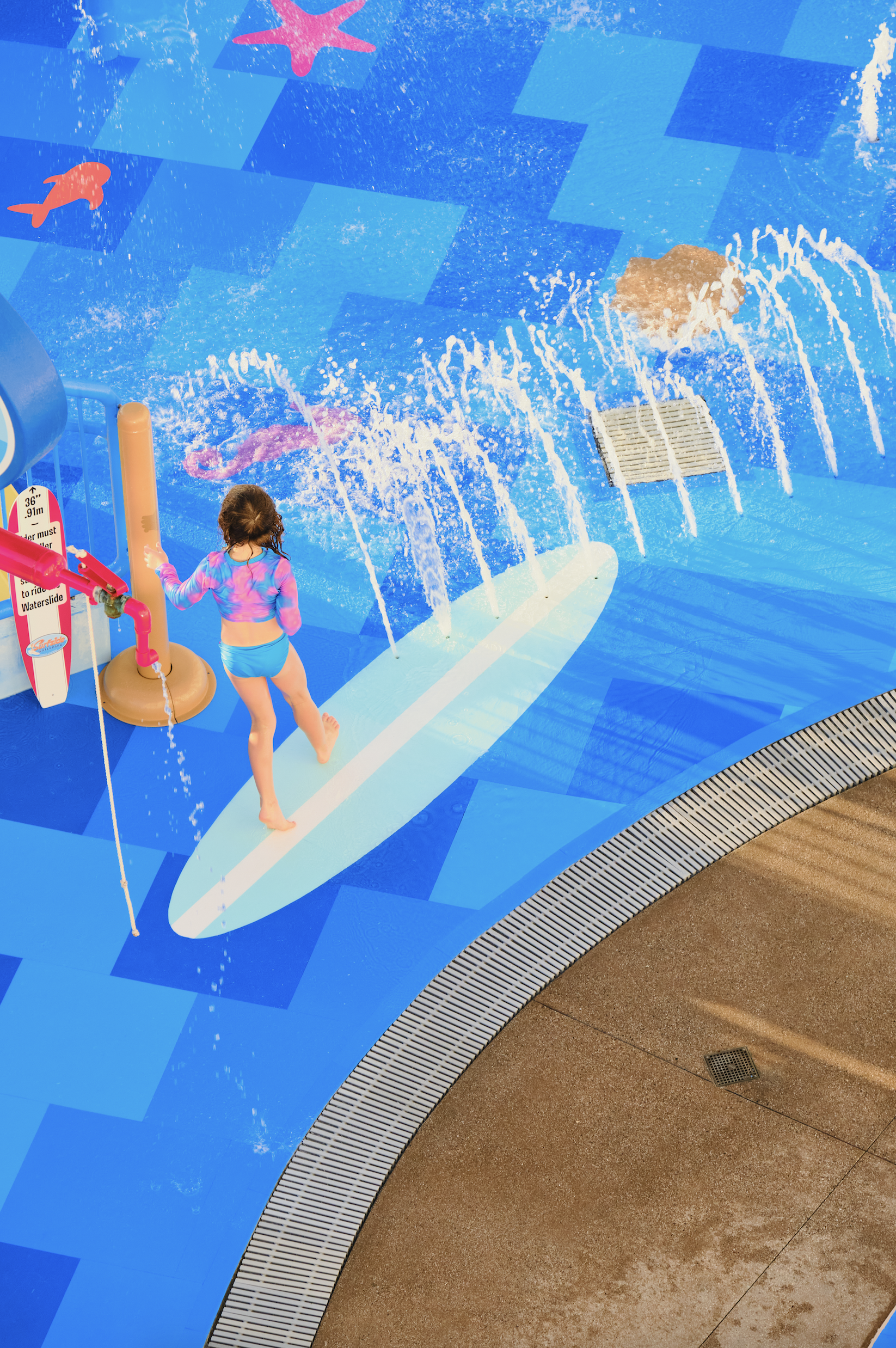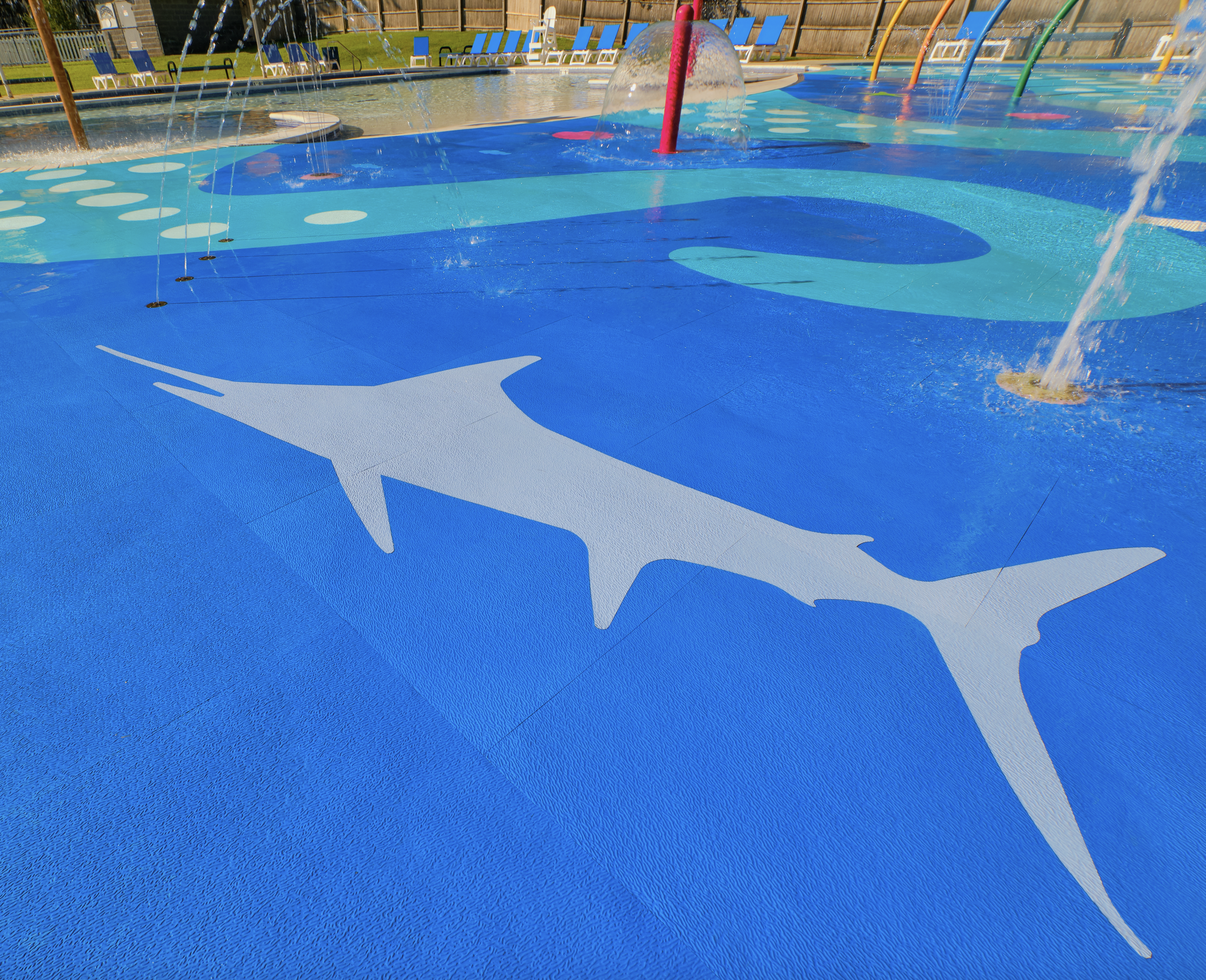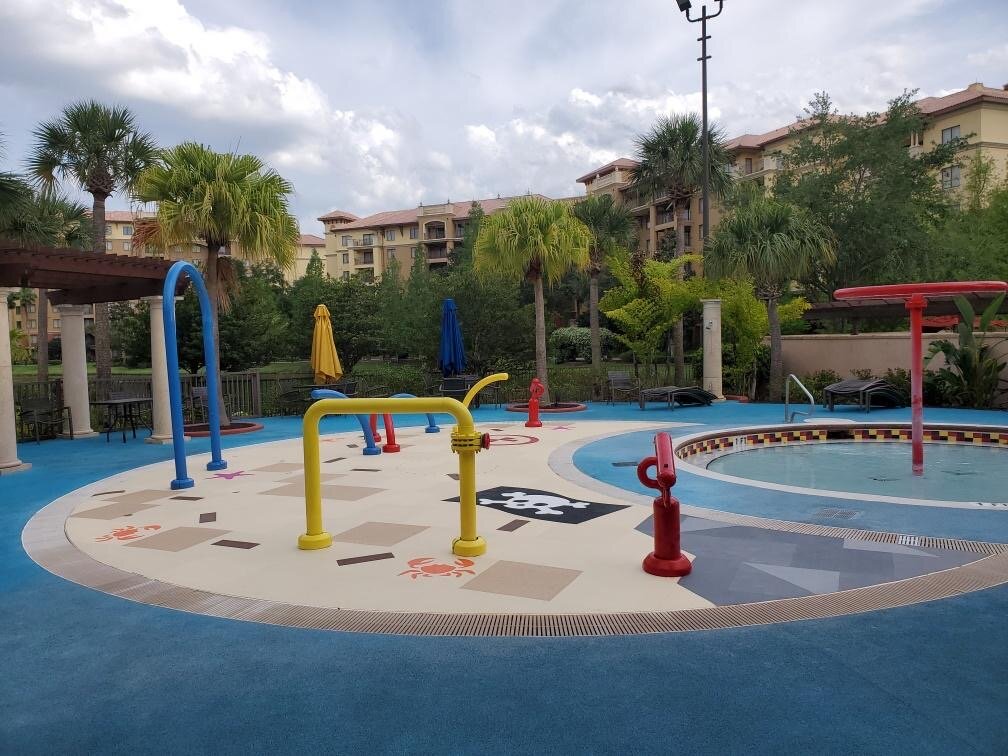Splash pads have become a welcome addition to many communities, water parks, cruise ships, and resorts since they provide water play for guests of all ages. Typically, the main attractions of these areas have been spray features. Some splash pads also incorporate slides and multi-level play structures - essentially playgrounds with water added to them. While these elements offer many different ways to play on splash pads, these facilities become even more exciting when they offer an engaging flooring design. By adding a design or pattern to the surface of a splash pad, not only does the feature look better overall, but it also provides children with the opportunity to play and engage in more diverse ways.
A simple way of designing the surface of a splash pad is to make it thematic. This allows the floor to match the look and feel of the features on site and become part of the attraction. For instance, a splash pad with aquatic or sea creature spray features could be designed with colors that mimic the ocean or the beach. To expand on this idea, sea creature shapes embedded throughout the floor can further enhance theming. Facilities can even use these sea creatures for search and find activities. They could invite guests to find all of the seahorses or count the number of starfish, for instance.
Splash pads can also enhance guest experience by including games in the surface design. Hopscotch boards, four square configurations, and Twister-like layouts can all be used to add extra activities to the aquatic play area. Giant mazes could also engage guests in new ways. These flooring features can add play value to a surface that may have otherwise been left blank.
Other designs can encourage guests to follow certain paths or hop across certain features. For instance, small lily pad inlays could encourage children to leapfrog across a “pond.” Likewise, winding paths could lead guests through and around spray features. A treasure hunt design could also provide a guided imaginative adventure.
Splash pad flooring designs also have the potential to engage children with life-sized objects portrayed on the surface. True-to-life inlays of whales or dolphins can be designed into the splash pad as a fun, educational element. Flat shapes of surfboards or boats can encourage children to pretend that they’re exploring the sea.
Beyond all of these ideas for thematic elements and games, splash pads can encourage creative free play with simple geometric designs. For a splash pad using a variety of colors, children can invent games out of stepping on tiles of certain colors. A similar idea can be applied to a splash pad that features different tile shapes. Concentric circles or bands of color also inspire engagement in new ways.
All of the designs shown above have been created using Life Floor tiles, which can be customized to any shape or size. Pairing an engaging surface design with our slip-resistant and cushioned tiles has the potential to enhance a simple splash pad with both safety and elements of fun — increasing play value and overall appeal.
Have a unique idea you’d like to discuss with our team? Contact us at solutions@lifefloor.com. We’d love to help make it a reality!





















